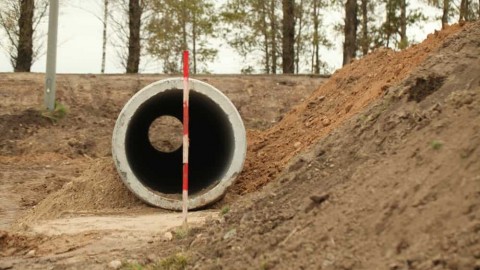The Australian Energy Market Operator (AEMO) has released its 2022 Gas Statement of Opportunities (GSOO) report which forecasts that existing, committed and anticipated gas supply will meet declining gas consumption until 2033.
The 2022 GSOO is based on the ‘step change’ scenario developed with stakeholders for the Draft 2022 Integrated System Plan (ISP) and drafted using supply information from gas industry participants.
The report also shows the pathway for gas is uncertain as Australia transitions to a net-zero emissions economy by 2050.
In the 2022 GSOO, AEMO assesses the adequacy of reserves, resources, and infrastructure to meet domestic and export needs for gas over a 20-year outlook period across all Australian jurisdictions other than Western Australia and the Northern Territory.
The GSOO analyses a range of potential futures, focusing on the adequacy of the system to meet changing gas needs from now until 2041.
AEMO Executive General Manager System Design, Merryn York, said gas has a critical role in the electricity market as coal generation retires, however, future gas use is expected to be impacted by consumers switching to electricity and alternative gaseous fuels.
“AEMO’s Draft 2022 ISP shows that dispatchable firming capacity, such as gas, hydro and battery storage, will complement variable renewable generation as coal-fired generation leaves the market,” Ms York said.
“Under AEMO’s scenarios, there is uncertainty about future demand for and supply of natural gas as the market identifies pathways to decarbonise and users look to alternative fuels, like hydrogen or electricity, for industrial processes, manufacturing, heating, and cooking.”
The 2022 GSOO and 2022 Victorian Gas Planning Report Update also forecast a risk of gas shortfalls under extreme weather conditions from winter 2023 in New South Wales, Victoria, Tasmania and the Australian Capital Territory.
The Victorian Gas Planning Report Update is published every two years and assesses the adequacy of the Victorian Declared Transmission System to supply peak day gas demand and annual consumption over a five-year outlook period.
“A shortfall risk in the south-eastern states in winter 2023 is forecast under extreme conditions, given ongoing production decline from Bass Strait, and pipeline capacity limits from northern Australia, including the Moomba to Sydney Pipeline and the South West Pipeline,” Ms York said.
Gas projects to reduce shortfalls
Minister for Resources and Water, Keith Pitt, said the 2022 GSOO supports the previous findings of the ACCC’s January 2022 Interim Report and the Government’s National Gas Infrastructure Plan that more gas supplies need to be unlocked to ensure supplies.
“The role gas plays in these uncertain times is essential and Australia’s resources sector is not only helping to provide lower gas prices at home, but also providing stability across the globe,” Mr Pitt said.
After winter 2023 to 2026, shortfall risks are expected to be further reduced by anticipated projects including Port Kembla Energy Terminal, Golden Beach and some additional Victorian offshore field developments.
Minister for Industry, Energy and Emissions Reduction, Angus Taylor, said continued investment in Australia’s gas resources is essential to avoid the supply shortfalls and price volatility currently being experienced across Europe and Asia.
“Gas prices in Asia and Europe have increased by more than 300 per cent over the past 12 months and are currently around 78 per cent higher than our domestic gas prices. Australian workers, manufacturers and households cannot afford to have that situation here at home,” Mr Taylor said.
“AEMO is clear that gas generation, like our investment in the Hunter Power Project in Kurri Kurri, will continue to play a critical role in the electricity grid as a much-needed source of on-demand, reliable power to support and firm growing renewables.”
Turning to renewables
The Australian Energy Market Commission is reviewing the potential to extend the regulatory frameworks to include hydrogen and renewable gases, and future GSOOs may apply an alternative definition of natural gas, accommodating any changes to the National Gas Rules.
However, the Climate Council is calling on all governments to speed up plans to phase out gas in light of the 2022 GSOO.
Climate Councillor, Senior Lecturer at Macquarie University, School of Law and energy expert, Dr Madeline Taylor, said Australia does not have a gas supply problem.
“Australia produces five times more gas each year than is used for domestic purposes, and 80 per cent of Australia’s gas is exported or used by the gas industry itself,” Dr Taylor said.
“Expanding gas use will only make Australia more susceptible to global energy shocks like we are seeing in Russia right now.
“Australian gas production has tripled in the past decade, yet gas prices have gone up and up, not down – and it’s the most expensive form of power in Australia, driving up power bills.
“Renewables are already replacing gas in the electricity sector, with gas use in 2021 falling to its lowest level in more than 15 years in the National Electricity Market.
“The quickest and cheapest way to increase Australia’s supply of clean, secure, affordable energy into our electricity systems is to replace gas with renewables.”

















